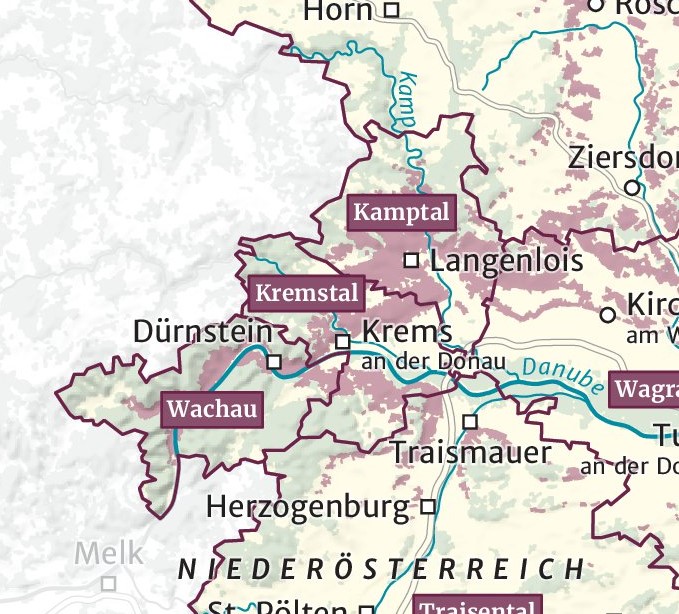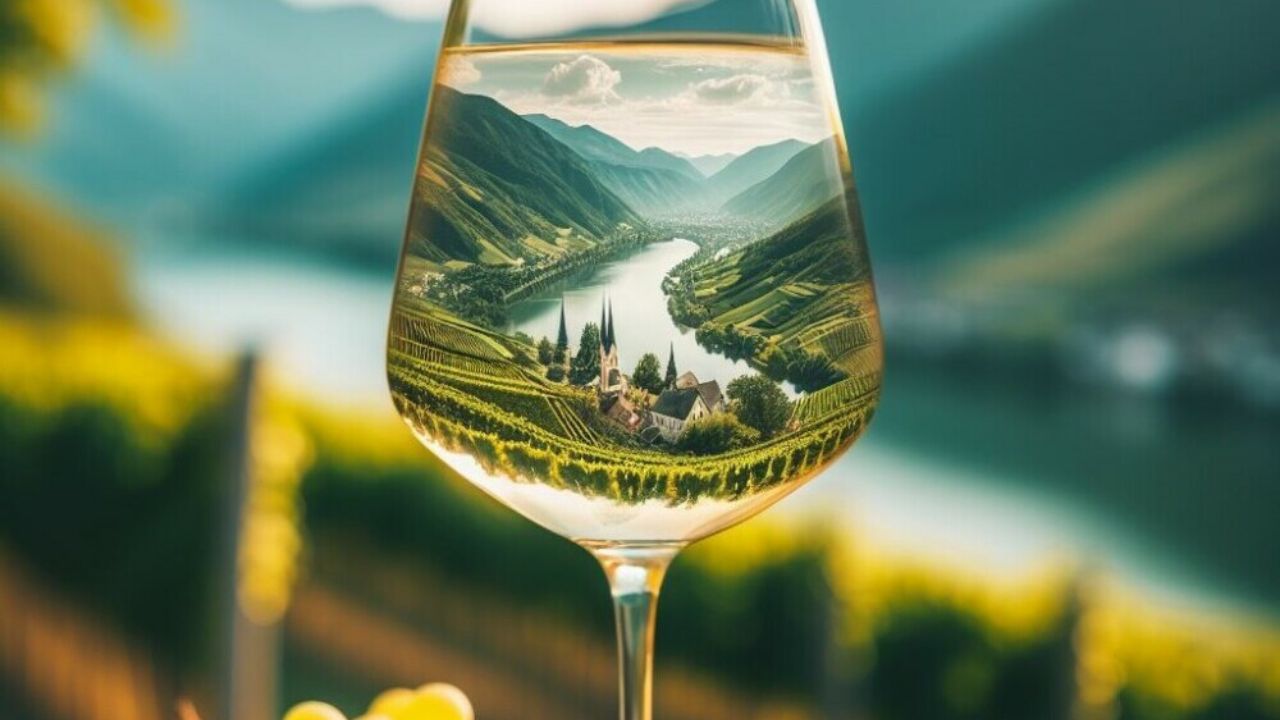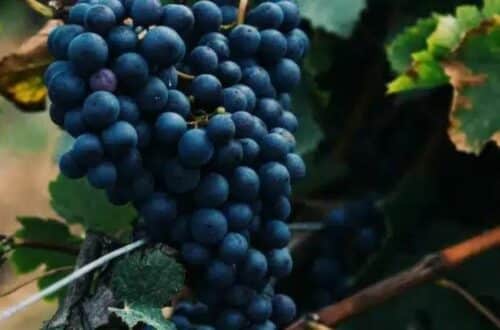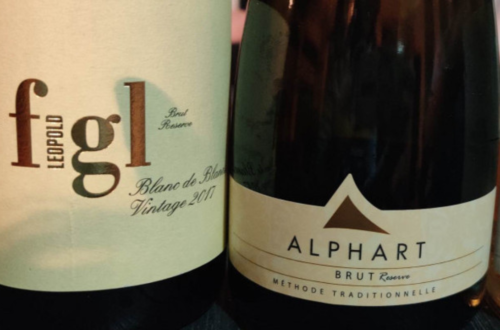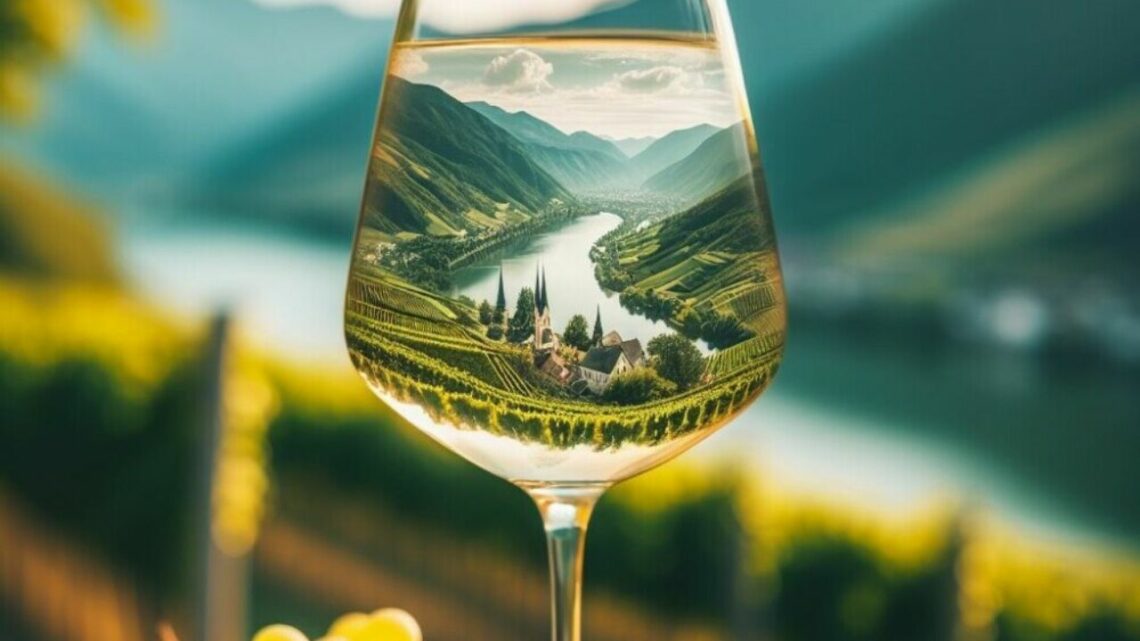
The Impact Of Terroir On Grüner Veltliner Production
Ever wonder what makes a Grüner Veltliner so darn special? It’s not just sunshine and happy vines (although those play a big part!). The secret weapon? Terroir – that fancy French word for a whole lotta things that influence how a grape grows and tastes.
We all know soil is important, right? If you don’t, you’re new here! and that’s ok, welcome!
For reminder’s sake : the vine craves five elements for wine birth. Heat is its essence. Sunlight, a must for photosynthesis, crafts glucose and oxygen from carbon dioxide and water. Soil nutrients, drawn by the vine, fuel growth and ripen the grapes.
The impact of soil on wine is crucial. France is well known for the right pairing : grape and soil. If you want some examples, check out my post on soil pairing.
So let’s discover the impact of the different terroirs on the Austrian Grüner Veltliner production. So, the question is: can you taste the difference between a Grüner Veltliner from Wachau and one from, say, Kremstal or Kamptal?
In the Wachau, imagine a Grüner Veltliner with laser-sharp minerality and intense flavors. That’s all thanks to Wachau’s crazy-steep slopes and super-rocky soils. It’s like the athlete of the Grüner world – lean, mean, and built to impress. In Kremstal, loess is the name of the game here, a soil type that gives Grüner Veltliners a richer body and a rounder, smoother feel in your mouth. Think less laser focus, more juicy apple and pear flavors. Perfect for those who like their wines easy to drink and oh-so-enjoyable. Last, for Kamptal, buckle up for complexity! This region has a crazy mix of soil types, and it shows in the wines. Expect Grüner Veltliners that are both rich and minerally driven, with a hint of floral elegance thrown in for good measure. It’s like the thoughtful friend of the Grüner world – interesting, complex, and always a conversation starter.
Wachau’s Terroir and Its Influence on Grüner Veltliner
Wachau: Vines, Time, Evolution
Imagine a stunning valley nestled along the Danube River, dotted with charming towns, ancient ruins, and of course, vineyards! That’s the Wachau Valley for you. But this place isn’t just about pretty views – it has a rich history.
People have been living and shaping the Wachau landscape for ages. Way back in the day, folks from the Neolithic period started clearing the land, making way for future grapevines. Then, around 800 AD, Bavarian and Salzburg monasteries came rolling in, carving those iconic terraced vineyards we see today. Pretty cool, right?
Over the centuries, the Wachau has seen its fair share of ups and downs. Climate changes, shifts in the wine market – it all played a role in how grapes were grown.
For example, labor shortages in the 17th century led to a focus on hillside vineyards, while the 18th century saw some areas turn into pastures. Fast forward to the 19th century, and things changed again. Some parts of the valley gave up on grape growing altogether, while others adapted to the market.
Geology of Wachau
Okay, geology time! The Wachau Valley isn’t just beautiful, it’s built on some seriously old stuff. Picture this: steep slopes formed from ancient, super-tough crystalline rocks such as gneiss, amphibolites, marbles, and even some quartzites. Pretty impressive, right?
As you move down the hills, things get a bit more mixed up. Think of it like a giant’s rock garden – tumbled rocks and boulders scattered around, sometimes hidden under a layer of fine, windblown dust called loess.
And near Spitzer Burgberg and Weißenkirchen, there’s a whole other story! Here you’ll find remnants of gravel, sand, and clay – leftover souvenirs from ancient rivers and floods that shaped the area millions of years ago.
All in all, if you’re not a pointer in geology, the main takeaway is this: the Wachau Valley is dominated by weathered granite and gneiss. These rocks are kind of cracked and crumbly in some places, which is actually a good thing for the vines! Those cracks allow the roots to dig deep down and soak up all the good stuff the soil has to offer.
Climate of Wachau
Concerning the climate, we have to consider two major forces: on one side, you have the wet and mild Atlantic breezes rolling in from the west. On the other side, it’s all about hot, dry summers and harsh winters thanks to the influence of the Pannonian plains (think Hungary). Luckily, the mighty Danube River helps keep things from getting too extreme.
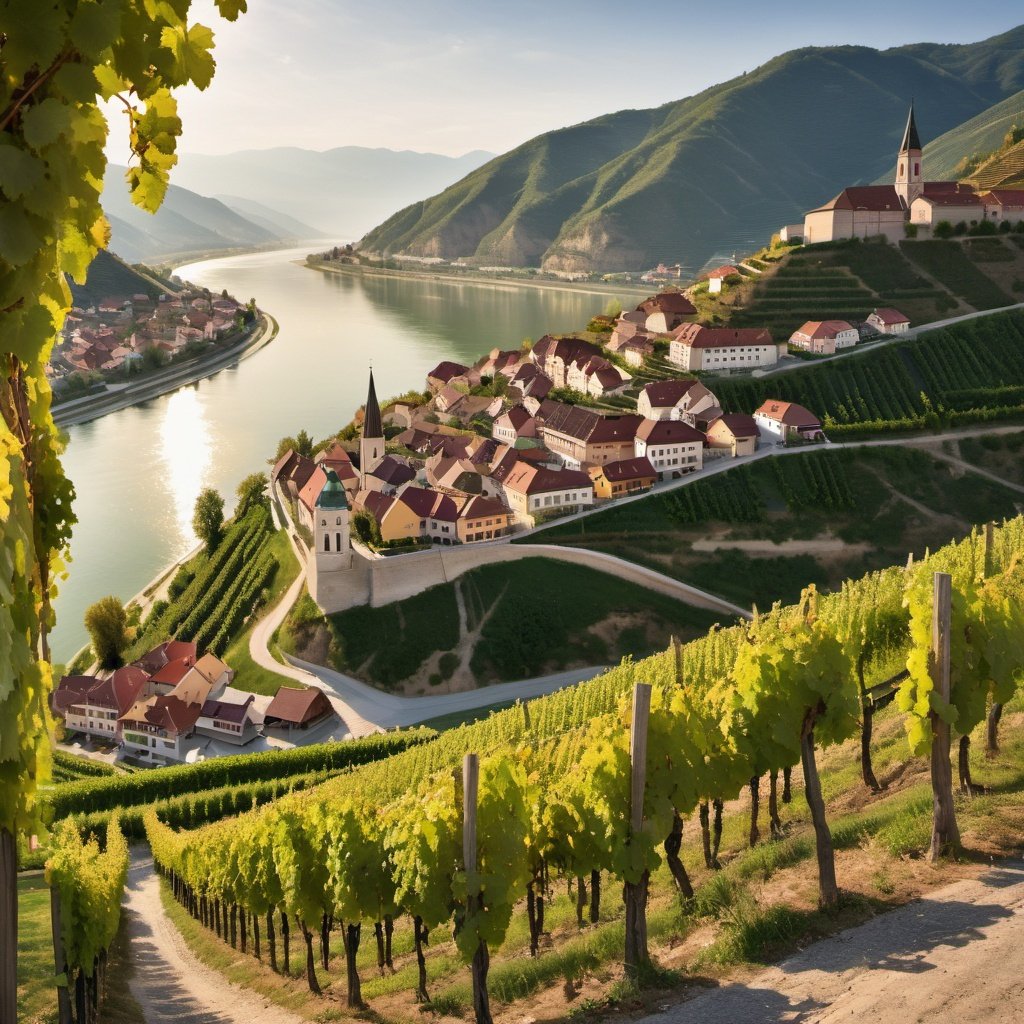
But here’s the twist: the battle between hot air from the plains and cool winds from the Weinviertel (a region near Slovakia) creates some serious temperature swings (we call them fluctuations) betwen day and night, especially right before harvest time. Remember, these swings are actually a good thing! They help give Wachau’s Grüner Veltliners that refreshing acidity and a nice, structured body.
One last thing to keep in mind: rain is a bit of a rarity in the Wachau. Combined with the well-drained soils (we’ll get to that in a sec!), this means water is kind of precious for the vines. It all adds up to a unique climate that helps craft those delicious and distinctive Grüner Veltliners we all love.
Austrian Grüner Veltliner Beyond Wachau
Grüner Veltliner thrives in Lower Austria—Wagram, Kremstal, Kamptal, Traisental, and the Wachau.
So, let’s talk soil types! In the Wachau Valley, two main players dominate: thin soils perched on top of ancient rocks like granite or gneiss, and loess. Remember loess? That’s that mineral-rich, windblown sand all the way from the Alps. Grüner Veltliner especially loves loess – it’s found mainly on the east side of the hills and contributes to the wines’ complexity.
Now, let’s take a quick trip around Austria to see how terroir affects Grüner Veltliner in other regions. Heads up! We’ll be hopping around a bit, so buckle up.
First stop: Traisental. They get more rain than other regions, but the wind helps dry out the grapes. Soils vary here, with clay being the most common. Moving closer to the Wachau, granite soils become more prominent, giving the wines a refreshing character.
Next up: Wagram. Here, Grüner Veltliner is king, accounting for half the grapes grown. And guess what? Loess dominates the soils here too.
Weinviertel, Austria’s biggest wine region, is all about white wines, with Grüner Veltliner leading the charge. The climate varies – the north is drier with warm days and cool nights, while the east enjoys a warmer climate. Soils are mainly loess, sometimes mixed with gravel, clay, or limestone.
Fun fact: Weinviertel was actually the first region in Austria to establish a DAC (Districtus Austriae Controllatus) in 2002, proudly declaring Grüner Veltliner as Austria’s own.
We can’t forget Carnuntum either! This region has vineyards on slopes and plateaus with a mix of sand, loam, loess, and gravel.
And in the Thermenregion, Grüner Veltliner reigns supreme, overshadowing indigenous varieties.
Finally, Burgenland. Grüner Veltliner is widespread here, but it doesn’t dominate quite as much as in Lower Austria.
Exploring International Grüner Veltliner
Grüner Veltliner has ventured beyond Austrian borders, as you know. It’s cultivated in several countries, each putting its own twist on the grape:
- Czech Republic: Known as Veltlin or Veltínskè Zelené.
- Profile: Can vary but often resembles Austrian Grüner Veltliner.
- Flavors: Similar green apple and citrus notes, with a touch of spice.
- Structure: Depends on the region but generally maintains a good acidity.
- Hungary: Goes by Zöld Veltlini.
- Profile: Zesty and refreshing.
- Flavors: Green fruits, lime, and a subtle herbal note.
- Structure: Crisp acidity, medium-bodied.
- Slovakia: Recognized as Veltlinske Zelené.
- Slovenia: Goes by Zeleni Vetlinac.
- Germany: Spotted in the Rheinhessen region.
- Profile: Lighter style compared to Austrian Grüner Veltliner.
- Flavors: Citrus, green apple, and a touch of floral notes.
- Structure: Crisp acidity, often more on the light to medium-bodied side.
- Italy (Alto Adige): Referred to simply as Veltliner.
- Profile: Elegant and expressive.
- Flavors: White peach, pear, and a floral character.
- Structure: Balanced acidity, medium-bodied.
In North America:
- United States: Found in various states, including California, Oregon, Maryland, New Jersey, Pennsylvania, Virginia, and Washington.
- Profile: Diverse styles, ranging from crisp to richer expressions.
- Flavors: Green apple, citrus, sometimes with tropical fruit notes.
- Structure: Can vary from light to full-bodied, depending on the region and winemaking.
- Canada: Concentrated in British Columbia.
- Profile: Cool climate influences with bright acidity.
- Flavors: Green apple, lemon, and a touch of minerality.
- Structure: Crisp acidity, medium-bodied.
In the Southern Hemisphere:
- Australia: Notably in the Adelaide Hills.
- Profile: Cool climate influence, showcasing freshness.
- Flavors: Citrus, green apple, and a hint of white pepper.
- Structure: Crisp acidity, medium-bodied.
- New Zealand: Thriving in regions like Gisborne, Marlborough, and Central Otago.
- Profile: Fresh and lively.
- Flavors: Citrus, green apple, and sometimes tropical fruit.
- Structure: Crisp acidity, ranging from light to medium-bodied.
The Impact of Terroir in the Wachau, Kremstal and Kamptal on Flavor Profiles of Grüner Veltliner
So, Wachau vs. Kremstal vs. Kamptal – can you really tell the difference? I hear you – all these Austrian regions with their fancy names can be confusing. I mean, I visited them all myself, and even with a map in hand, it wasn’t always easy to tell where one ended and the other began. The borders seem more political than anything, with vineyards sometimes straddling regions.
Forget the borders though! What truly matters is what’s happening within each individual vineyard and the choices the winemakers make. That’s where the magic happens!
Now, let’s dive into the good stuff – the terroir! Each region has its own unique combination of soil, climate, and winemaking practices that shapes the character of its Grüner Veltliners. Let’s take a closer look at each one:
- Wachau: Think steep, terraced vineyards clinging to the Danube River. The soils here are rocky and unforgiving, with lots of gneiss and granite. This means excellent drainage due to the gneiss. And the mineral elements combined with the cool climate influenced by the Danube also adds layers of complexity, revealing subtle earthy and mineral nuances to the renowned green and white fruit notes.
The result? Wachau Grüner Veltliners are known for their laser-like focus, minerality, and aging potential. They’re like the athletes of the Grüner world – lean, mean, and built to last.
- Kremstal: This region is all about variety. The soils range from fertile loess (think windblown, nutrient-rich goodness) to loam. Those loess soils are what give Kremstal Grüner Veltliners their fuller body and rounder mouthfeel. Imagine a ripe, juicy apple or pear instead of that super-focused minerality of Wachau.
Plus, Kremstal tends to be a bit warmer, so the grapes get riper, leading to those delicious fruit flavors. Kremstal Grüner Veltliners are like the crowd-pleasers – still refreshing, but with a touch more richness.
- Kamptal: Buckle up for geological diversity! This region has a mix of loess, gravel, crystalline massifs, and even fractured sandstone. All these elements come together to create complex, minerally driven Grüner Veltliners. Think balance – you still get those green apple and pear notes, but with a touch of floral aroma and a subtle earthiness. due to the influence of crystalline massifs. Kamptal Grüner Veltliners are like the thoughtful friends – interesting, complex thanks to the fractured sandstone that allows for deep root penetration, and always a good conversation starter. They are more approachable and less austere compared to Wachau Grüner Veltliners for instance.
Winemaking Traditions and Techniques
Winemaking? Don’t worry, it’s not rocket science…well to understand at least! But it does play a big role in how each Grüner Veltliner ends up tasting. Just like with terroir, different regions have their own way of doing things.
Wachau, the traditionalist: Picture this – steep slopes, terraced vineyards, and meticulous winemakers. Here, it’s all about old-school techniques and letting the grapes shine. Hand-harvesting ensures only the best grapes make it into the bottle, and whole-cluster pressing helps preserve those pure, racy flavors. Many Wachau producers also use stainless steel tanks for fermentation, which keeps things nice and crisp – perfect for highlighting that signature Grüner Veltliner acidity and those bright fruit notes.
Kremstal, the crowd-pleaser: Remember Kremstal’s diverse soils? Well, winemakers here take that into account too. They often use fermentation and aging techniques that find a sweet spot between richness and freshness. Think approachable styles that are still super drinkable.
Kamptal, the innovator: This region is all about pushing boundaries! Winemakers here love to experiment with different fermentation vessels, from classic stainless steel to maintain freshness) to fancy oak barrels. This can create Grüner Veltliners with a whole range of textures and flavor profiles – from super crisp to something a bit richer and more complex.
One thing’s for sure: no matter where you go in Austria, there’s this deep respect for the land. Winemakers are all about showcasing the unique personality of Grüner Veltliner grown in their specific corner of the world. It’s all about letting the terroir speak for itself!
The cool thing is, this variety in winemaking adds another layer of intrigue to the world of Austrian Grüner Veltliners. It’s like a choose-your-own-adventure story – there’s a Grüner out there for everyone!
Food Pairing Adventures
Alright, let’s talk food pairings! This can get a little tricky because, well, taste is a personal thing. What one person finds delicious, another might find, well, not so much. It all depends on your own unique flavor preferences and sensitivities. Spicy might be a party for you, but torture for your friend. #nospicyplease
The good news? Food can actually change the way you taste wine! Sweet and savory flavors (what we wine nerds call umami) can make a wine seem “harder” on the palate, while salty and acidic foods can soften it up. Think of it like turning the volume knob on your taste buds!
Fun fact : want to know what umami is? Microwaving a button mushroom ramps up its umami. So taste it before and taste it after!
Here’s a cheat sheet to get you started:
- High Acidity: This is where Grüner Veltliner shines! Its zippy acidity pairs perfectly with rich foods like Wiener Schnitzel or creamy mushroom dishes. Think deep-fried anything or citrusy flavors – they’re a match made in heaven.
- Spicy and Bold: Feeling adventurous? Grüner Veltliner can handle the heat! Spicy Asian cuisine – spring rolls, curries, stir-fried noodles – all become even more delicious with a glass of Grüner by your side.
- Fresh and Light: Seafood lovers, rejoice! Grüner Veltliner is the perfect partner for oysters, shrimp, or barbecued white fish. Its light and refreshing character complements those delicate flavors beautifully.
- Herbaceous and Earthy: Veggie lovers, we haven’t forgotten you! Grüner Veltliner loves green dishes like veggie tarts, and it has a special thing for artichokes and asparagus. Even Brussels sprouts can become best friends with a glass of Grüner (promise!).
- Ready to unwind? Cheese time! Grüner Veltliner pairs beautifully with creamy cheeses like Brie or Mozzarella. And don’t knock it till you try it – even grilled Halloumi cheese can be a delightful companion.
So, there you have it! A few ideas to get you started on your Grüner Veltliner food pairing adventures. Remember, the most important thing is to experiment and find what works best for your taste buds.
Conclusion: A Journey Through Different Terroirs
Mind blown by the magic of Grüner Veltliner terroir? You’re not alone! We’ve explored how each region in Austria shapes this grape into something truly special:
- Wachau: Think laser-focused minerality and intense flavors, thanks to those steep slopes and rocky soils.
- Kremstal: Loess soils here create Grüner Veltliners with a richer body and rounder mouthfeel, perfect for those who love approachable styles.
- Kamptal: Get ready for complexity! This region’s diverse geology leads to Grüner Veltliners that are both rich and minerally driven, with a touch of floral elegance.
Ready to put your taste buds to the test? Head over to one of my recommended online wine shops and explore their selection of Grüner Veltliners. With this handy cheat sheet in mind, you’ll be a Grüner pro in no time!
And the adventure doesn’t stop there! Grüner Veltliner is not the only grape in Austria that changes depending on the terroir. Blaufränkisch is a second example! So, why not expand your exploration and discover the impact of terroir on Blaufränkisch in Austria too?




